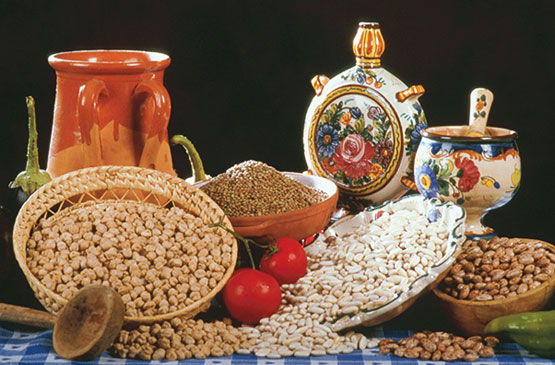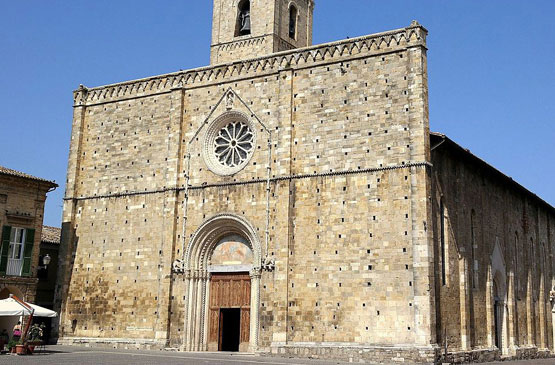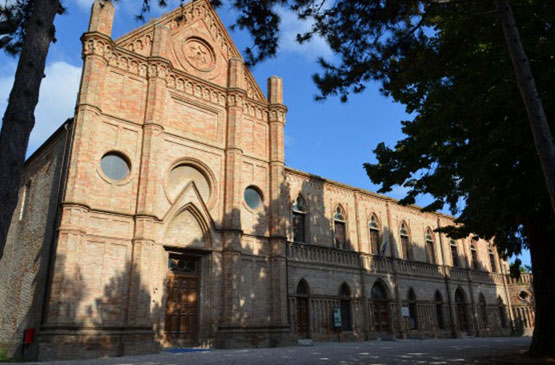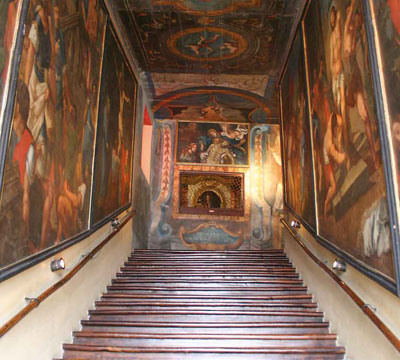Teramo
The city of Teramo has ancient origins, was the capital of “Practotium”, name gave under the roman dominion. On the dominion of the emperors Augusto and Adriano, the city lived a gold time, which was witnesses the baths, the theatre, the amphitheatre and many other monuments submerged from the new city. Over the year 1400 Teramo was dismembered from the wars over the families of Melatini, Antonelli, Spennati and Mazzaclocchi. After the authority past to Francesco Sforza and Alfonso d’Aragona and in the year 1798 until 1815 to the French, while the city turn back under Spanish rights, following afterwards the history and destiny of southern Italy.

Castelli
At the foot of the Gran Sasso mountain rises Castelli, the "city of pottery" where the fine art of working this noble row material is passed down over the centuries from father to son. Being the home of famous pottery craftsmen who worked for the King of Neaples and important noble families of Rome, in Castelli you can visit various craftsmen's workshops where it is possible to buy some pottery products.
Campli
Campli is situated on a hill between the river valleys of Fiumicino and Siccagno, rich of architectonics monuments, which make Campli a city of arts. Campli is seat of a section department of archaeological national museum, which accommodate the remains of Campovalano’s necropolis. The “Palazzo Parlamentare”, became “Farnese” and situated in front of the cathedral “S. Maria in Platea” with his roman bell-tower and built on 1300, is a marvellous architectonical example of medieval epoch. Also famous the “Scalar Santa” (sacred stairs) so named because, after 1776, usually was gave the indulgence to them who climbed it on their knee’s.

National Park of Gran Sasso
Civitella del Tronto is one of the stations of departure for the naturalistic excursions in the National Park Gran Sasso and Mounts della Laga, characterised from the rich vegetation and for the presence of great herbivorous like chamois, stag-beetle and roe deer, also predators like the wolf, the wild cat, the beechmarten, king eagle.

San Gabriele
The sanctuary of San Gabriele, the patron saint of Abruzzo, is situated in the town of Isola del Gran Sasso; it is a well known destination where tourists come all over the year. The antique part of the building dates from 1908 and is build in neoclassical style, while the modern part has been build in coeval style. In the antique part you may admire the rests of the Saint in a bronze urn and in the "Sala dei Doni" some memorabilia of the Saint.
Salinello Gorges
Near to Civitella Del Tronto it’s possible to make some excursions in the gorges of Salinello. A natural environment, which connect history, culture and nature between the two slopes of the Twin Mountains: “Montagna di Campli” and “Montagna dei Fiori”. author of this natural monument was the torrent “Salinello”, whit his influence on the entire mountain, realized in millions of years a few kilometres long gorge, 200 m high and from 5 to more quantity of 10 meter large, determining waterfalls, caves and cavities.

Atri
Since the XII and XI century b. Chr., Atri was a prestigious city of an-cient time. Atri was also the only city of Adriatic coast, who strikes his own coin before Rome and thank to his port, one of the most important exchange place. The thesis, that probably the Adriatic sea tucks his name from the ancient "Hatria". In the war against Hannibal, Atri was allied to Rom. The city had his most splendour under the dukes of "Acquaviva". The numerous archaeological finds, disseminated on the surrounding area, are witnesses of the glorious past of Atri.

Corropoli
In the old town you can visit the medieval square Footer Court with feature fountain. A few miles from the center is the Abbey of Santa Maria di Mejulano, dating from the year one thousand. Ripoli is the name of the Neolithic settlement that rose in part on the territory of the municipality of Corropoli. He was the medical officer of the country, Concezio Rosa, to find out in 1871.
©2017 That's web













